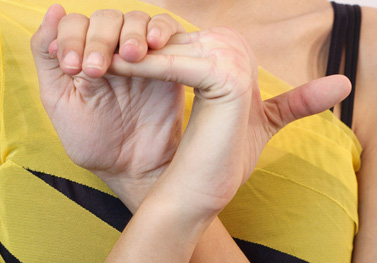Mbodies newsletter
The Hypermobile Client in the Pilates Environment

■ Introduction
The Hypermobile Client in the Pilates Environment
Created by Suzanne Martin, MA, PT, DPT, this one day course is designed to address the growing need for Pilates instructors, fitness instructors and allied health professionals to expand their practice potential into the care of those with the only-recently understood dysfunctions associated with hypermobility.
Hypermobility is a poorly understood condition, whose diagnosis is often missed by traditional imaging techniques. Hypermobility can mean a number of things. The hyper-mobile population includes clients who are either post-partum, have acquired their flexibility through physical training or trauma, have an autoimmune issue or have a genetically loose collagen type. In addition, their joints may be shaped differently than our general client population.
The Pilates Methodology is well-suited to help with the dilemma of pain and dysfunction associated with populations who have hypermobility. Learn how to identify the differences between various forms of hypermobility, their varying causes and what you can do to intervene utilizing the Pilates Method of rehabilitation and management. Learn quick assessment techniques to help identify this population. Learn how to identify some of the abnormalities associated with the condition in the spine, elbows, wrists, hips, knees and ankles .
■ Objectives
Upon completion of this course participants will be able to:
-
Describe the term hypermobility.
-
Better understand the different populations who may be affected by hypermobility and why
-
Better understand the difference between acquired and genetic hypermobility
-
Describe the body’s local tissues reactions to hypermobile joints
-
Better understand the difference between instability and hypermobility
-
Better understand the difference between those with a disease state and those with a hypermobile condition
-
Better understand the elements involved with helping those with hypermobility to exercise safely
-
Describe how the Pilates environment can help those with hypermobility
-
List and identify the criteria for the revised Brighton hypermobility scale
-
Describe evidence that gives information about how to help and train those with hypermobility
-
Describe goals useful in working with a hypermobile population
-
Learn exercise series in the Pilates environment that focus on the following body areas to promote better joint congruency and ergonomics in the Pilates environment as well as in daily life
-
Spine
-
Hips
-
Knee and leg alignment
-
Ankles and feet
-
Elbows and wrists
-
Neck

■ Duration
7 hours
■ Further Details
The hyper-mobile population is especially at risk for increased ligament laxity and tends to have low tone musculature. Evidence-based diagnostic criteria will be given to determine the level of laxity involvement, and an overview of the spectrum of hypermobility, from pathological to benign, will be presented. The pathophysiology will be explained, as well as several cases will be highlighted.
Paradoxically these clients need proper form to stretch fascia and musculature although they are especially at risk for increased ligament laxity. Many tend to have low muscle tone. Learn how to enhance joint congruency and promote the proprioception needed for stability so that they can both enjoy, and build, true strength through Pilates.
Contraindications and precautions for treatment will be addressed for this population. Course content reviews structural assessment and targets the most effective sites of concentration for optimal stabilization in order to restore optimal function and greatest discomfort relief. Manual treatments will be suggested and demonstrated, as well as emphasis being given for the rationale for spring compression engagement in the development of neurogenic strength. Specific reformer, trapeze table choreography will be presented along with a home-exercise spring program.

- 2.1 Dynamic Posture and Breathing Retraining: from Classical Pilates to Current Research
- 2.2 Myofascial Slings : Form, Force, and Function: Application of the Myofascial Slings in Pilates and Functional Exercise
- 3.1 What the Shneck? Addressing Dysfunction and Maximizing Function in the Shoulder and Neck
- 3.2 We've Got Your Back: How to Address Common Injuries and Disorders of the Spine through Pilates Exercise
- 3.3 Hips Don't Lie ! : Understanding and Addressing Lumbopelvic and Hip Disorders in Pilates
- Assessment techniques for Scoliosis management
- Assymetry and Functional Correction
- Pilates based treatment of Scoliosis, focusing on Motor Control and Recruitment/ Mat
- Scoliosis etiology, Background and Spinal Mechanics
- The Foot : Foot mechanics & Medical Background
- The Foot : Pilates based treatment, Motor Control and Recruitment
- The Foot: Assessment techniques for Foot management
